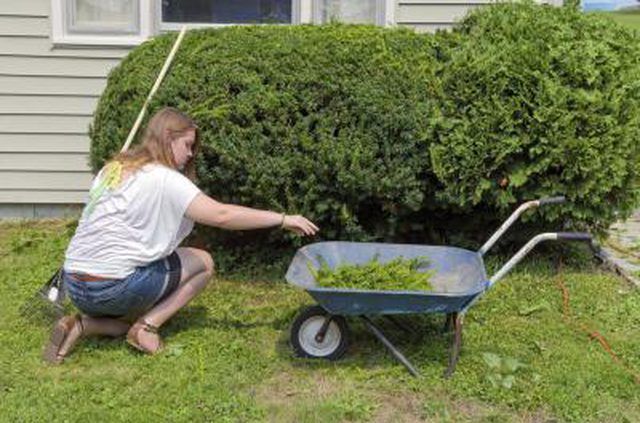Bulbs
Flower Basics
Flower Beds & Specialty Gardens
Flower Garden
Garden Furniture
Garden Gnomes
Garden Seeds
Garden Sheds
Garden Statues
Garden Tools & Supplies
Gardening Basics
Green & Organic
Groundcovers & Vines
Growing Annuals
Growing Basil
Growing Beans
Growing Berries
Growing Blueberries
Growing Cactus
Growing Corn
Growing Cotton
Growing Edibles
Growing Flowers
Growing Garlic
Growing Grapes
Growing Grass
Growing Herbs
Growing Jasmine
Growing Mint
Growing Mushrooms
Orchids
Growing Peanuts
Growing Perennials
Growing Plants
Growing Rosemary
Growing Roses
Growing Strawberries
Growing Sunflowers
Growing Thyme
Growing Tomatoes
Growing Tulips
Growing Vegetables
Herb Basics
Herb Garden
Indoor Growing
Landscaping Basics
Landscaping Patios
Landscaping Plants
Landscaping Shrubs
Landscaping Trees
Landscaping Walks & Pathways
Lawn Basics
Lawn Maintenance
Lawn Mowers
Lawn Ornaments
Lawn Planting
Lawn Tools
Outdoor Growing
Overall Landscape Planning
Pests, Weeds & Problems
Plant Basics
Rock Garden
Rose Garden
Shrubs
Soil
Specialty Gardens
Trees
Vegetable Garden
Yard Maintenance
When to Prune Cedar Hedges
When to Prune Cedar Hedges. The common name "cedar" is used for several kinds of evergreen coniferous trees, and a number of them are suitable for hedges. They include true cedars (Cedrus spp.), eastern white cedar (Thuja occidentalis) and western red cedar (Thuja plicata), both of which also are called arborvitae (Thuja spp.), Oregon...

The common name "cedar" is used for several kinds of evergreen coniferous trees, and a number of them are suitable for hedges. They include true cedars (Cedrus spp.), eastern white cedar (Thuja occidentalis) and western red cedar (Thuja plicata), both of which also are called arborvitae (Thuja spp.), Oregon cedar (Chamaecyparis lawsoniana) and eastern red cedar (Juniperus virginiana). When to prune depends on the kind of cedar you have.
Cedar Pruning Guidelines
Pruning shears can be used for most cedar hedge shaping and maintenance tasks because they require cutting small-diameter stems. Use hand pruners rather than power hedge trimmers, cutting back to a node that has an upright lateral branch. A node is the place where a leaf attaches to a stem, and a lateral branch is one that grows from the side of a stem or branch. Use a pole trimmer for a tall hedge. Maintain an annual pruning schedule so the growth doesn't get out of control. No more than one-third of the hedge should be removed in a single growing season. Before each pruning session, clean the pruning tools with a cloth soaked with rubbing alcohol to avoid spreading plant diseases.
True Cedars
True cedars are slow-growing trees that can be cut back and maintained as a large-scale hedge. When the plants reach 6 inches taller than the height desired for the hedge, cut the plants back to about 6 inches below the desired height. Then perform pruning as necessary to keep the hedge that height. Prune your cedar hedge from late winter to early spring, careful never to take the cuts back to bare wood because new growth won't form from the bare branches. The species of true cedar are Lebanon cedar (Cedrus libani), which is hardy in U.S. Department of Agriculture plant hardiness zones 5 through 7, Atlas cedar (Cedrus atlantica), hardy in USDA zones 6 through 9) and deodar cedar (Cedrus deodara), hardy in USDA zones 7 through 8.
Thujas
Eastern white cedar, hardy in USDA zones 4 through 7, depending on the variety, lends itself to hedging because of its rapid growth. Normally, the tree attains a height of 40 to 60 feet, but shorter cultivars are easier to maintain as hedges. Prune this species in early spring or summer to keep the hedge the desired shape and size. Young plants under 3 feet tall usually don't need pruning during their first year in a landscape. During their second and third years, do formative pruning in spring to develop the hedge's height and eventual shape, with the top narrower than the bottom. Perform maintenance pruning in midsummer. Western red cedar, hardy in USDA zones 5 through 7, grows faster than eastern white cedar and needs more work to keep it a short hedge height. Prune this plant in spring for shaping and again in early autumn for maintenance.
Oregon Cedar
Native to western North America, Oregon cedar naturally grows into an 82-foot-tall tree with finely textured foliage that accepts clipping well. Prune the tree during summer to keep it hedge size, never taking the cuts back to bare wood. Oregon cedar adds about 18 inches of growth annually after it has become established in its setting. It is hardy in USDA zones 5 through 7.
Eastern Red Cedar
Accepting a wide variety of growing conditions, eastern red cedar tolerates most soil types as long as they have good drainage. The tree is hardy in USDA zones 3 through 9. Keep the tree a hedge by maintenance pruning in late winter to early spring. Eastern red cedar tolerates pruning well as long as it isn't cut back to bare wood. A number of cultivars are available and vary in foliage color, height and growth form. An eastern red cedar is either male or female.